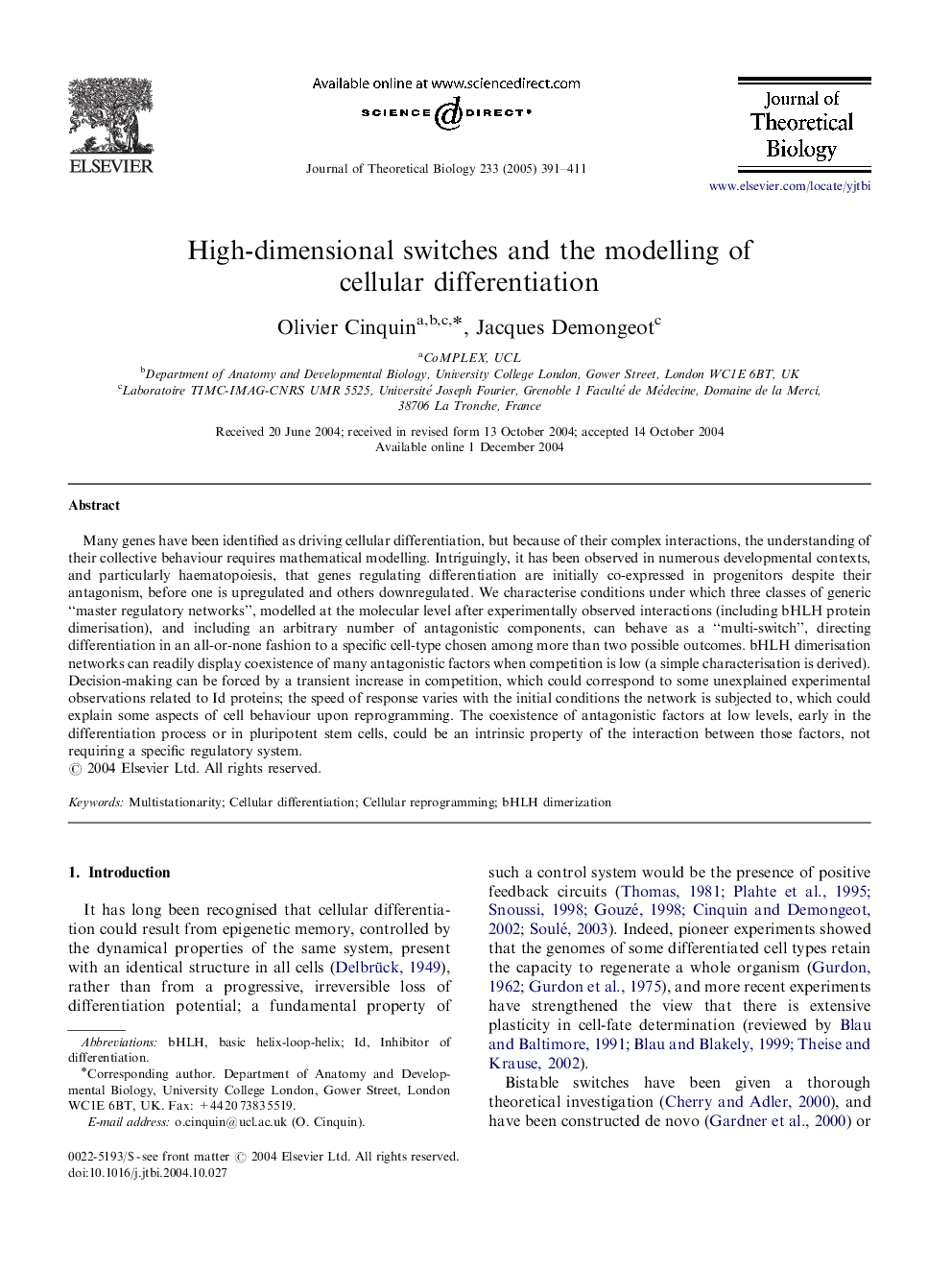| کد مقاله | کد نشریه | سال انتشار | مقاله انگلیسی | نسخه تمام متن |
|---|---|---|---|---|
| 9469868 | 1319069 | 2005 | 21 صفحه PDF | دانلود رایگان |
عنوان انگلیسی مقاله ISI
High-dimensional switches and the modelling of cellular differentiation
دانلود مقاله + سفارش ترجمه
دانلود مقاله ISI انگلیسی
رایگان برای ایرانیان
کلمات کلیدی
موضوعات مرتبط
علوم زیستی و بیوفناوری
علوم کشاورزی و بیولوژیک
علوم کشاورزی و بیولوژیک (عمومی)
پیش نمایش صفحه اول مقاله

چکیده انگلیسی
Many genes have been identified as driving cellular differentiation, but because of their complex interactions, the understanding of their collective behaviour requires mathematical modelling. Intriguingly, it has been observed in numerous developmental contexts, and particularly haematopoiesis, that genes regulating differentiation are initially co-expressed in progenitors despite their antagonism, before one is upregulated and others downregulated. We characterise conditions under which three classes of generic “master regulatory networks”, modelled at the molecular level after experimentally observed interactions (including bHLH protein dimerisation), and including an arbitrary number of antagonistic components, can behave as a “multi-switch”, directing differentiation in an all-or-none fashion to a specific cell-type chosen among more than two possible outcomes. bHLH dimerisation networks can readily display coexistence of many antagonistic factors when competition is low (a simple characterisation is derived). Decision-making can be forced by a transient increase in competition, which could correspond to some unexplained experimental observations related to Id proteins; the speed of response varies with the initial conditions the network is subjected to, which could explain some aspects of cell behaviour upon reprogramming. The coexistence of antagonistic factors at low levels, early in the differentiation process or in pluripotent stem cells, could be an intrinsic property of the interaction between those factors, not requiring a specific regulatory system.
ناشر
Database: Elsevier - ScienceDirect (ساینس دایرکت)
Journal: Journal of Theoretical Biology - Volume 233, Issue 3, 7 April 2005, Pages 391-411
Journal: Journal of Theoretical Biology - Volume 233, Issue 3, 7 April 2005, Pages 391-411
نویسندگان
Olivier Cinquin, Jacques Demongeot,